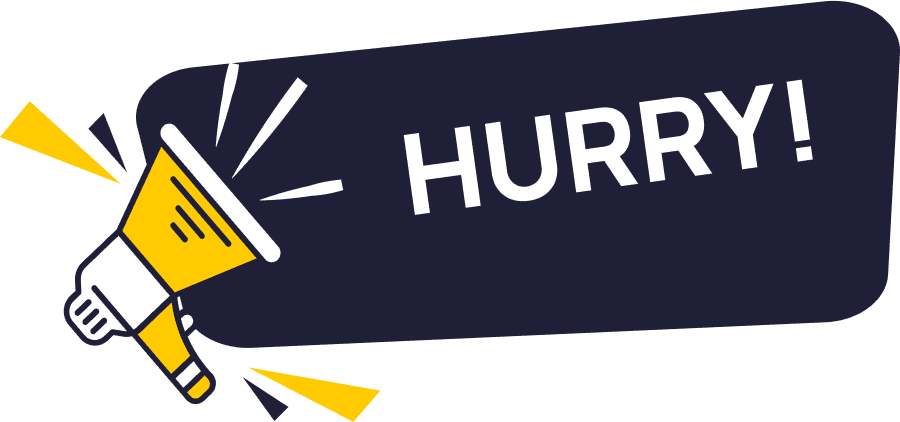Jan 18, 2025
What is Cold Emailing for Networking?

Cold emailing for networking refers to reaching out to individuals you haven't previously interacted with, usually with a specific professional purpose. Whether seeking advice, exploring collaboration opportunities, or aiming to expand your network, cold emailing is an effective way to build meaningful connections with people outside your immediate circle.
Why is Cold Emailing Effective for Networking?
Cold emails provide direct and personalized communication that often cuts through social media noise or mass messaging. When done correctly, cold emails can help you connect with thought leaders, potential mentors, and industry peers who may otherwise be difficult to reach through other platforms.
It's a low-cost, high-return approach to building relationships that could open doors to:
New career opportunities
Partnerships
Mentorship
Networking through cold emails, when approached with respect and personalization, is a powerful way to forge long-term professional relationships.

Related Reading
• How to Send Bulk Emails
• Outreach Automation
• How to Know if Someone Opened Your Email
• How to Send a Cold Email for Networking
• How to Follow Up on a Cold Email
• Best Time to Send Cold Emails
Step-by-Step Guide to Writing a Cold Email for Networking

Personalization boosts the chances of receiving a response to your cold email. Everyone gets generic emails, and they all go straight to the trash. To avoid the same fate, show the recipient you’ve done your homework.
A great way to do this is to find common ground based on your research. Start by checking their:
LinkedIn profile
Company website
Recent blog posts
Articles they’ve written
Look for topics they care about or accomplishments they’ve recently achieved. This information will allow you to tailor your email and show you completed your homework.
Create a Subject Line That Grabs Attention
Your subject line is your first impression. It must grab attention and convey relevance to avoid being dismissed as spam. Keep your subject line short, clear, and personalized. Reference something specific about the recipient or a mutual interest to create a connection immediately.
For example:
Inspired by your recent talk on AI at [Conference]” or “Seeking advice on breaking into [Industry].
Write an Email Introduction That Gets to the Point
Busy professionals don’t have time for lengthy introductions. You must reach the point quickly while establishing who you are and why you’re reaching out. Start by introducing yourself in one or two sentences, then establish a connection by mentioning something specific about the recipient’s work or expertise that piqued your interest.
For example:
Hi [Name],
I’m [Your Name], a [Your Role] at [Your Company].
I’ve been following your work on [Topic] and found your recent insights on [Specific Subject] particularly helpful.
Make Your Request Clear and Relevant
Ambiguity is a common cold email killer. Be specific about why you’re contacting them and what you’re asking for. Clarity is essential, whether seeking advice, a quick call, or collaboration. Politely ask for their time or input, but make sure the request is reasonable—no one appreciates demanding requests from strangers.
A short coffee chat or email exchange will more likely be accommodated. For example:
I’d love to ask you a few questions about [Topic] and hear your thoughts on [Specific Aspect]. Would you have 15 minutes for a quick chat?
End With a Courteous and Professional Close
How you close the email can leave a lasting impression. Be polite and express gratitude for their consideration, even if they cannot respond. This keeps the door open for future opportunities. Avoid sounding pushy or desperate. Thank them for their time and emphasize that you understand they’re busy.
For example:
Thank you so much for considering my request. I understand you’re busy, and I appreciate any time you can spare. Looking forward to hearing from you.
Best Practices for Successful Cold Emailing
Cold emailing can be a highly effective way to build professional connections, but the approach matters. Following a few best practices will significantly increase your chances of getting a positive response and building meaningful relationships through outreach.
Personalize Every Email
A generic email will likely be ignored, while personalized messages show that you’ve put thought and effort into the outreach. Mentioning specific details about the recipient’s work or achievements demonstrates your interest in them.
Reference something particular to the recipient, such as a project they’ve worked on, a recent talk they’ve given, or an article they’ve published. This shows you’ve done your research and aren’t just mass-emailing everyone.
Keep It Short and Focused
Busy professionals don’t have the time to read long, unfocused emails. Keeping your email concise ensures that your message is clear and digestible. Stick to one central point in your email:
Seeking advice
Requesting a meeting
Discussing collaboration
Avoid unnecessary information or overly complex details. For example, instead of writing a long email that covers several topics, focus on one explicit request, such as: “I’d love to get your insights on how you broke into the SaaS industry.”
Follow Up (Politely!)
Your first email might get overlooked or lost in a crowded inbox. A polite follow-up can remind the recipient of your request without being intrusive. Wait about 5-7 days after the first email before following up. Keep it brief and polite, and express understanding if they’re busy.
For example:
Just wanted to follow up on my previous message in case it got buried in your inbox. I’d still love to connect if you have the time.
Sample Cold Emails for Networking
Here are four examples of well-crafted cold emails that show how to connect effectively with professionals through personalized outreach:
1. When You’re Reaching Out to a Stranger You Admire
Perhaps someone works in a relevant department at your dream company. Or, maybe it’s that experienced professional with a stellar reputation in your field. Either way, you’re eager to establish a connection with this person you respect—even though you’ve never met.
Hello [Name],
I hope you’re having a great week!
My name is [Your name], and I work as [Position] at [Company]. I became familiar with your work when [how you discovered this person] and wanted to tell you how much I admire your [skill or specific experience].
If you’re open to it, I’d love to [grab coffee/connect on LinkedIn/other opportunity to get to know each other] to [keep in touch/learn more about your experience].
Really looking forward to keeping in touch, [Name]!
Best,
[Your name]
What it Looks Like
Hello Kendall,
I hope you’re having a great week!
My name is Kim, and I am a staff writer at The Globe. I became familiar with your work when I saw your piece about marketing strategies for Business Insider. I wanted to tell you how much I admire your relatable and straightforward writing style.
If you’re open to it, I’d love to grab a coffee to find out more about your experience and connect (and commiserate!) with a fellow writer.
Looking forward to keeping in touch, Kendall!
Best,
Kim
2. When You’re Following Up With Someone You Met Briefly
You made some polite small talk and then exchanged business cards with this person at a networking event. Rather than letting that contact information collect dust in your desk drawer, you want to take the next step to forge a relationship.
Hello [Name],
I hope you’re having a great [day of the week].
It was so lovely to meet you at [place where we met] and chat about [topic you discussed]. After our conversation, I found this article about [relevant topic]. I thought you’d find it interesting and enlightening, so I figured I’d pass it along.
Again, I enjoyed meeting you and look forward to keeping in touch. Don’t hesitate to reach out if you want to get together and bounce around some more ideas about [topic]. I’d love that!
Wishing you the best,
[Your name]
What it Looks Like
Hello Josh,
I hope you’re having a great Friday.
It was so lovely to meet you at the recent marketing association meeting and chat about content marketing trends. After our conversation, I found this article about the most effective B2B headlines. I thought you’d find it interesting and enlightening, so I figured I’d pass it along.
Again, I enjoyed meeting you and look forward to keeping in touch. Don’t hesitate to reach out if you want to get together and bounce around some more ideas about click-worthy article titles. I’d love that!
Wishing you the best,
Kim
3. When You’re Requesting an Informational Interview
You don’t just want to connect with this stranger—you want to learn from her. You’re eager to set up an informational interview (or even a more informal coffee date or email chat) where you can come prepared with a list of questions you want answers to.
Hello [Name],
I hope you’re doing well!
My name is [Your name], and I’m a [job title] with [Company]. I admire your [work/experience] with [outlet]. I’m interested in discovering more about [area] myself and was hoping you’d be willing to provide some insights from your experience.
If you’re open to it, I’d love to buy you a cup of coffee sometime soon to ask you some questions and learn more about you and your [journey/career path].
I understand your schedule may be busy, so I’m happy to email some questions if that’s easier for you.
Looking forward to hearing from you, [Name]!
Best wishes,
[Your name]
What it Looks Like
Hello Megan,
My name is Kim and I’m a freelance writer specializing in career and self-development content. As a fellow writer, I really admire your advice articles for Entrepreneur. I’m interested in finding out more about writing about entrepreneurship topics myself and was hoping you’d be willing to provide some insights from your experience.
If you’re open to it, I’d love to buy you a cup of coffee sometime soon to ask you some questions and learn more about you and your writing journey.
I understand your schedule may be busy, so I’m happy to email some questions if that’s easier for you.
Looking forward to hearing from you, Megan!
Best wishes,
Kim
4. When You’re Connecting With a Friend of a Friend
Your friend or colleague recommended you contact one of his acquaintances, as he thought you’d have much to connect on. Rather than introduce you, he passed along that person’s contact information and encouraged you to contact him.
Hello [Name],
My name is [Your name], and I [how you know mutual contact] [mutual contact’s name], who passed along your contact information to me.
[Mutual contact’s name] mentioned that we share a [passion for/interest in/experience with] [shared interest] and said you’d be a great person to get to know! So, I thought I’d reach out, introduce myself, and let you know that I’d love to learn more about you and your experience with [specific area].
Looking forward to connecting, [Name]!
All the best,
[Your Name]
What it Looks Like
Hello Logan,
My name is Kim, and I’m good friends with Jane Doe, who gave me your contact information.
Jane mentioned that we share a passion for dog rescues and said you’d be a great person to get to know! So, I thought I’d reach out, introduce myself, and let you know that I’d love to find out more about you and your experience with Saving Paws Rescue.
Looking forward to connecting, Logan!
All the best,
Kim

Related Reading
• How Many Cold Emails Per Day
• Mailchimp for Cold Emails
• SMTP Send Email
• Best Bulk Email Sender
• Best Email Outreach Tools
• Bulk Email Providers
• Best Business Email Providers
• Best SMTP Server
• AI Tools for Email Marketing
• Amazon Ses Alternatives
• Postfix vs Sendmail
• Amazon Ses vs Sendgrid
How to Send a Cold Email for Networking Successfully in 7 Steps

Cold emailing is done for a particular reason. You get a few chances before you get blocked for not sharing what you want or confusing them by asking for too much in one email. That's why it is ideal to share only one apparent action item in the email for the readers.
Keep Subject Lines Mobile Friendly
The majority of people check their emails via mobile devices. Still, the subject line of many businesses' emails is unoptimized for mobile phones. Write only 5 to 7 words in your subject lines to optimize them for mobile phones and increase the chances of getting opened.
Time for a lesser-known fact on cold email writing: “Trying A/B test on the email subject lines. It can improve your email opens by around 30%.”
Avoid AI Language: Sound Human
These days, people can recognize AI language from miles away. If they feel like you are also one of the AI writers who doesn't put any effort into writing cold emails, your emails can get marked as spam. To avoid that, use simple language and personalized and relevant content that addresses prospects' pain points.
Proofread Carefully
Making spelling mistakes, writing wrong names, and many more silly mistakes can ruin your first impression. To save yourself from doing that, proofreading is non-negotiable. Make sure you proofread after everything else is done so you can also check for technical errors.
Keep It Brief
The ideal length of a cold email is 60 to 120 words. The fewer, the better. That is the difference between a marketing email and a cold email. Cold emails are to the point, short, and relevant. If you fluff even a little, your email can easily be misunderstood as a marketing email and get marked as spam.
Segment Your Prospects
Segmentation of the prospects list can be done manually or via a tool. If you have a short list, you can segment it yourself; otherwise, a tool is recommended. When you segment your prospects properly, you can write content that becomes relevant, accurate, and more targeted.
Use Cold Email Software
If following all these tips feels like too much work, use a cold emailing tool that can automate all these for you. You can easily create and fully automate your cold email outreach campaign with cold email software. Cold email software, like Inframail, provides robust analytics to track the impact of your email campaigns and evaluate their performance.
Automating Cold Email Success
This software lets you personalize, schedule, and automate cold email campaigns. It increases your odds with features such as A/Z testing, auto follow-ups, email deliverability toolkit, etc. The cold email software streamlines and optimizes your email outreach efforts, making it a handy tool for any sales team.
Time For a Lesser Known Fact On Cold Emailing
"Nearly 16% to 20% of emails land in the spam folder. Using an email verification tool, you can improve your email inbox placement rate to 95%!"

Start Buying Domains Now and Setup Your Email Infrastructure Today
A cold email is an unsolicited message sent to a receiver without prior contact or relationship. Cold emails are similar to cold calls; they can be awkward and uncomfortable initially, but they can lead to valuable conversations and warm introductions. Cold emails are beneficial for reaching out to someone you don’t know but would like to connect with.
Cold Emailing for Job Seekers
For example, send a cold email to a hiring manager to learn more about an open position. Alternatively, you could email a recruiter to discover more about their work and see if working together might be mutually beneficial. In either case, a cold email can help you network with someone to get ahead in your job search.
Related Reading
• Mailjet alternatives
• Woodpecker Alternatives
• Mailshake Alternative
• Lemlist Alternatives
• Zerobounce vs Neverbounce
• Mixmax Alternatives
• Neverbounce vs Kickbox
• Yesware Alternatives


